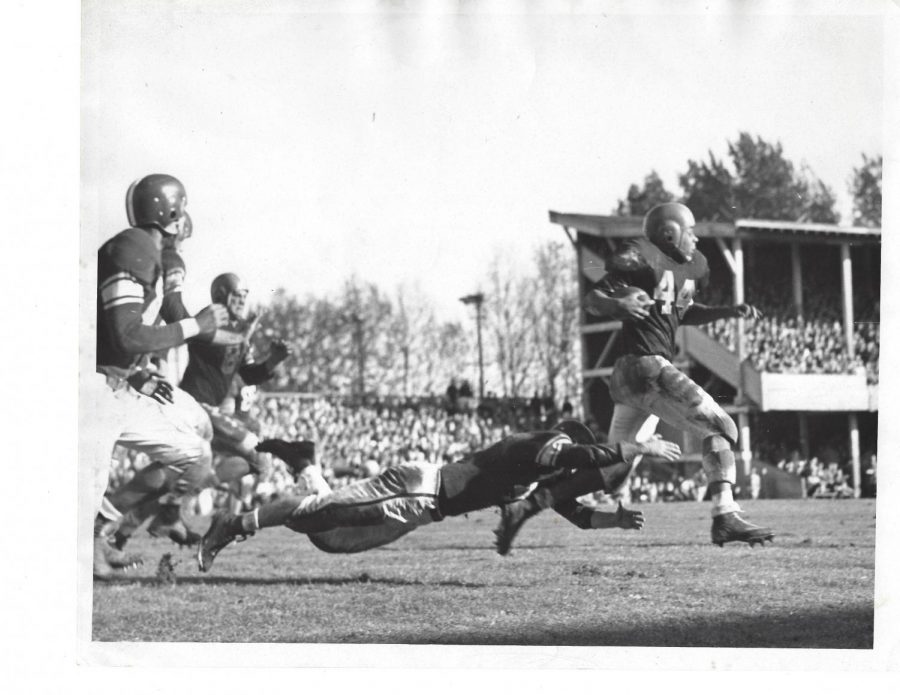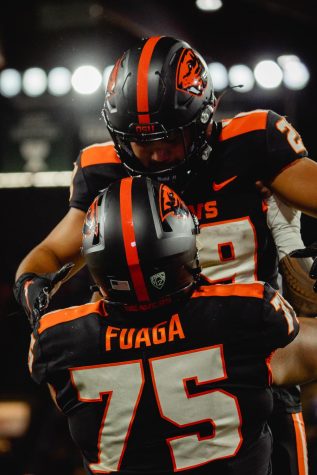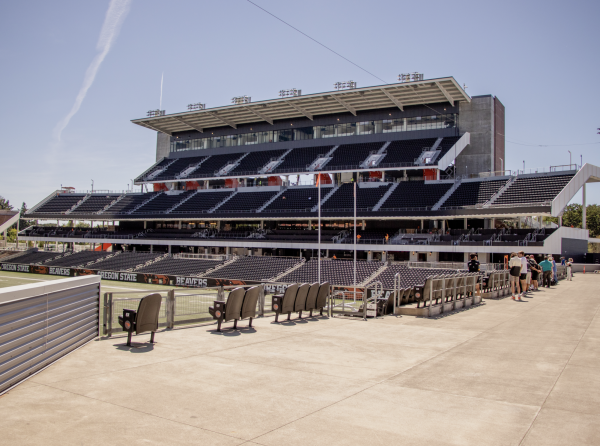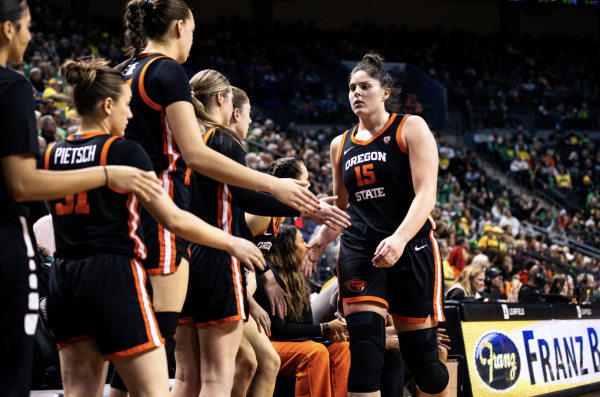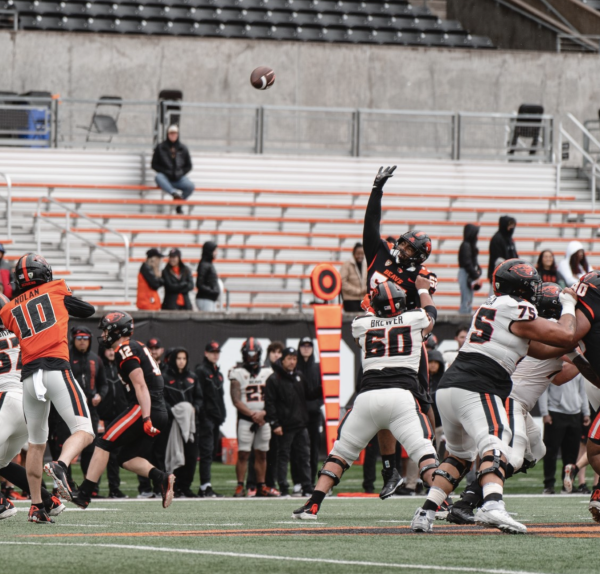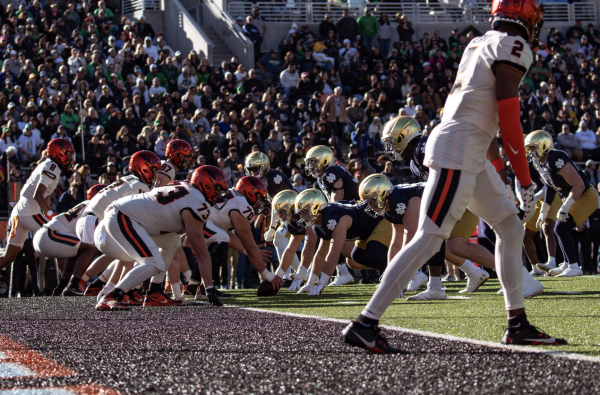Remembering Dave Mann, Oregon State Football’s trailblazer
February 27, 2021
With Black History Month coming to a close soon, it’s time to look back at the story of Dave Mann, the first athlete at Oregon State to break the color barrier and play for Oregon State’s football team.
Mann, who is originally from Berkley, Calif., attended Oregon State, known as Oregon State College instead of University at the time, from 1951 to 1954 and became the first Black player on the Beavers’ football team.
The story of integration in sports is a complicated one. At first, for many American sports, Black athletes were eligible to participate. For example, in 1920 when the NFL began, Black players were a part of it. Yet by 1934, there were none left, and were kept out of the league for over a decade.
Timelines were similar in other professional sports, but by the late 1940s integration was slowly starting again. The MLB, for example, saw the legendary story of Jackie Robinson breaking the color barrier in 1947.
Oregon State never had Black athletes on any of their teams before this period in the mid-1900s though, partially due to a history of racism in the state of Oregon. Laws excluded Black people from settling in the state and were only repealed in 1926. Oregon also had the highest per capita rates of KKK membership in the country in the 1920s.
Dave Mann breaking through the color barrier for the Beavers’ football team was a historic moment for Oregon State athletics, but not one that immediately led to mass change. The Oregon State Men’s Basketball team, for example, did not have a Black player on the team until 1961, when Norm Monroe suited up for the Beavers. Monroe was primarily a track athlete however and left the team halfway through the season.
By this point, Loyola Chicago’s basketball team was starting four black players who went on to win the NCAA Championship in 1963, and Bill Russell had already become a household name for the University of San Francisco, and even beat Oregon State in the NCAA Tournament in 1955. Oregon State was thus behind the curve in basketball, the other major college sport at the time behind football, Mann’s sport of choice.
Mann joined the team during a rough stretch, as the Beavers’ had a losing record all four years he was there. Yet, Mann still stood out, good enough to play as both punter and running back for the Beavers’ and was drafted to the NFL once he graduated, going to the Chicago Cardinals as the 74th overall pick.
Mann went on to enjoy a solid career in the NFL, playing for the Cardinals for three seasons from 1955 to 1957. His first season was his best as a running back with nearly 500 total yards and five touchdowns in 12 games. His participation as a running back decreased each season however, although he remained the punter for all three seasons, with his last being his best one with a 42.5 yard average on his punts over 59 punts on the season. He also occasionally returned kickoffs and had one field goal attempt in the NFL, which he made.
After his three seasons in the NFL, Mann moved on to the Canadian Football League, where he would go on to have an All-Star career. He joined the Toronto Argonauts, the oldest professional football team in North America, founded in 1873 as a rowing club and formed a football team in 1874. The Argonauts also have the most Grey Cup championships in the CFL with 17.
There, Mann expanded on the versatility he had shown with the Beavers and in the NFL. He was a punter for all of his 12 seasons in the CFL, from 1958 to 1970. However, he was also an offensive weapon for his first five seasons, a returner for his first three, a kicker and kickoff specialist for three seasons from 1967 to 1969, and even played defensive back in his first year.
For all this, Mann gained the nickname of ‘Superman’ among the Argonauts fanbase, and rightfully so, as his statistics were impressive at everything he did. In punting, his main skill, Mann never averaged below 41 yards per punt in his CFL career, and in 1967 and 1969 he averaged 46.8 and 46.7 yards per punt respectively. In 1966, he had a 102-yard punt, still the second-longest in CFL history. Overall in his career, Mann punted for a total of 55,745 yards and had a 44.2-yard average, the fifth-best of all time in the league.
Offensively, Mann averaged over five yards per carry as a running back, but ended up flourishing most as a receiver. He amassed over 3,000 yards at the position, despite only really playing on offense for five seasons. In 1961 he had his most impressive stat line with 63 receptions for 1,380 yards and 13 touchdowns over 14 games. The 22.7 yards per catch average is the highest in team history.
Mann also led the league in receiving in 1961, something which he did again the next season, earning a birth to the CFL All-Star teams both those years. Overall, Mann accumulated 4,294 yards and 33 touchdowns on offense by receiving, kicking, and even passing in his CFL career.
In the return game, the Argonaut All-Star continued to make an impact. Mann averaged nearly 22 yards per kick return and has the record for the longest punt return in league history with a 131-yard return for a touchdown in 1958 on the CFL’s 150-yard field.
Defensively, Superman was able to record four interceptions in his lone season playing on that side of the ball. He struggled a bit as a kicker though, with only a 44 percent kick conversion rate. On extra points, Mann was much stronger, converting just over 90 percent of those. His booming leg carried over to kickoffs too, where he averaged over 56 yards per kickoff.
But Mann’s athletic skill stretched beyond the football field, as from 1952 and 1953, Mann played for the Oakland Oaks, a minor league baseball team. In 1952 the team went 104-76 under manager Mel Ott, who is in the Baseball Hall of Fame.
For his feats in the CFL for the Argonauts though, Mann was nominated for the CFL Hall of Fame, although he didn’t make it in. He was, however, named to the All-Time Argo list in 2005 by his former team.
After his retirement, Mann got a Canadian citizenship and settled down in Canada, a country he is said to have fallen in love with immediately. He pursued many different careers and hobbies after football, including acting, magic, and playing the drums. Professionally, he eventually ran for a local political position and became an assistant football coach at St. Michael’s College. There, he finally won hardware in football, as he won four Mulock Cups, the championship for University of Toronto football teams.
Mann passed away in a nursing home in Toronto in 2012 due to complications from his battle with Dementia.
Mann was the first black player to play for the Beavers, opening the door for many Oregon State legends such as Fred Milton, Steven Jackson, Chad Ochocinco, Brandin Cooks, Jermar Jefferson, and more to follow in his footsteps.












































































































